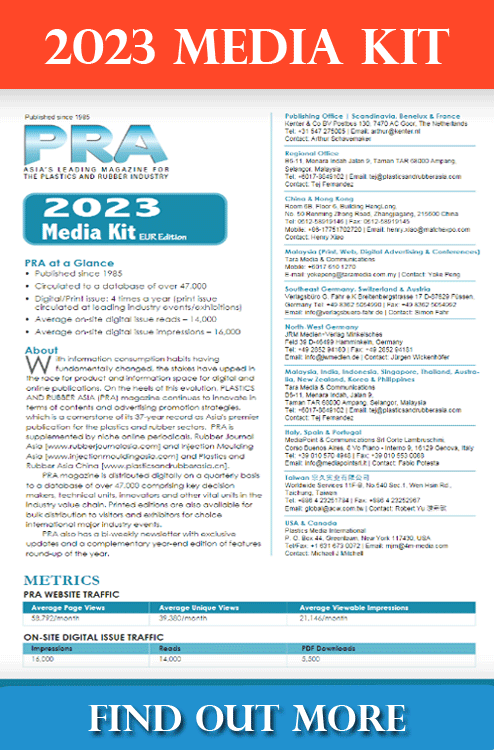EV batteries: Ford to build US$3.5 bn plant for EV batteries in Michigan; CATL to adopt Toyocolor’s CNT materials and Toyo to expand Chinese CNT plant

US auto maker Ford Motor Co. plans to build a US$3.5 billion factory in Michigan, US, that would employ at least 2,500 people to make lower-cost batteries for a variety of new and existing electric vehicles (EVs).
The plant, to be built on land being readied for industrial development about 160 km west of Detroit, would start making batteries in 2026. It would crank out enough batteries to supply 400,000 vehicles/year, Ford said.
The factory will produce batteries with a lithium-iron-phosphate (LFP) chemistry, which is cheaper than the current nickel-cobalt-manganese chemistry now used in many EV batteries.
Consumers could then choose between a battery with lower range and cost, or pay more for higher range and power. The company wouldn’t give any prices just yet.
“The whole intent here is to make EVs more affordable and accessible to customers,” said Marin Gjaja, chief marketing officer for Ford’s EVs.
Ford says a wholly owned subsidiary would own the factory and employ the workers. But China’s Contemporary Amperex Technology Co. Limited, or CATL, which is known for its lithium-iron-phosphate expertise and is the largest battery manufacturer, would supply technology, some equipment and workers.
Lithium-iron-phosphate batteries would go into standard-range versions of Ford’s EVs. For instance, the lowest price Mustang Mach-E electric SUV would get an LFP battery and would be able to travel 247 miles per charge. The long range version of the Mach-E will have a nickel-cobalt-manganese chemistry that takes it to 310 miles per charge.

Meanwhile in other news, Toyocolor Co, the colorants and functional materials arm of the specialty chemicals company Toyo Ink Group of Japan, says that the company’s Lioaccum conductive carbon nanotube (CNT) dispersions has been selected by the world's CATL for use in CATL’s next-generation high capacity li-ion batteries (LiB). Lioaccum CNT dispersions are scheduled for installation into mass-produced vehicles beginning 2024.
With governing bodies around the world tightening emission restrictions on gas-powered vehicles in an effort to achieve carbon neutrality, the percentage of EVs in the new vehicle market is expected to jump from 8% in 2022 to 30% in 2030. China’s EV market, one of the three largest automobile markets in the world, is broadly divided into the sub-markets of budget models for running short distances and high-end models that require longer cruising ranges. High-capacity LiBs are critical to extending cruising range for high-end vehicles.
The Lioaccum dispersion adopted by CATL is a key material that contributes to the expanded capacity and energy density of LiBs through the adoption of highly conductive CNTs. While the stable distribution of high-performance carbon nanotubes was once considered difficult to accomplish, Toyocolor succeeded in applying its proprietary dispersion technology to overcome technical hurdles and achieve highly stable CNT dispersions of high quality.
In line with CATL’s supply needs, Toyo Ink Group will be expanding the capacity of its dispersion production base, Zhuhai Toyocolor Co, in Guangdong, China. Lioaccum dispersions manufactured here are expected to be incorporated into mass-produced vehicles beginning 2024.
Toyocolor, whose core competency is carbon dispersion, has been supplying carbon black dispersions for LIB cathodes since 2015. LIB cathodes consist mainly of active materials, conductive materials and a binder. By substituting CNTs for carbon black as the conductive material, Toyocolor was able to achieve conductive performance with a nominal amount of material.
Toyocolor has been developing high-performance CNTs in collaboration with CNT manufacturers. The company applies its proprietary additives and dispersion manufacturing methods to dramatically increase CNT dispersibility and conductivity. This allows battery producers to lower the internal resistance of LIB cathodes with a smaller amount of conductive material. These technical advances not only lower the cost of materials used in battery manufacturing, but it also leads to increased levels of active materials in the cathode, thus making it possible to boost battery capacity, extend EV cruising range and improve EV rapid-charge performance, the company says.
(IMA)Subscribe to Get the Latest Updates from IMA Please click here
©2023 Injection Moulding Asia. All rights reserved.


















